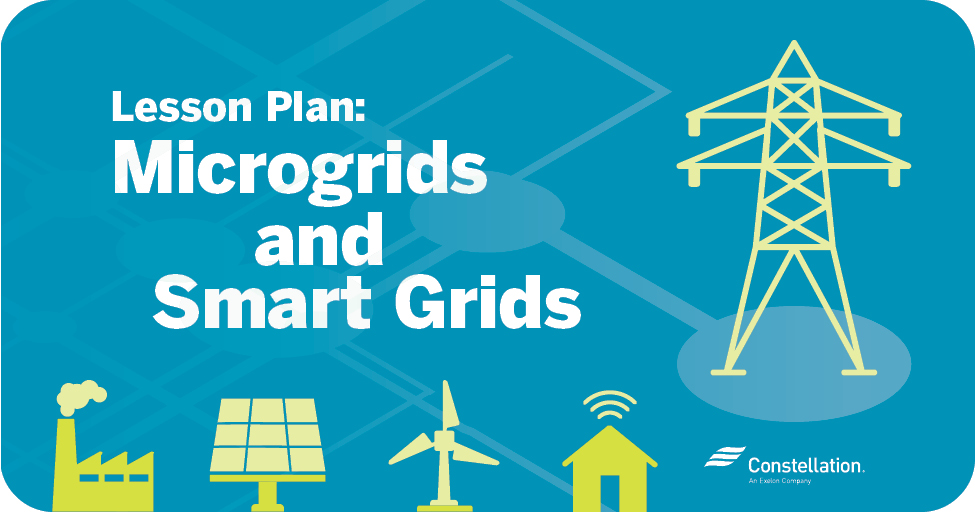This lesson will help students understand how electricity is transported and how smart meters and grid upgrades will help utilities and customers understand their energy consumption in an effort to save energy. Students will also be introduced to microgrids as a way for communities to reduce energy consumption collectively and ensure their local electrical infrastructure is safe and reliable.
Looking for more home energy activities? We’re pleased to work with The National Energy Education Development Project (NEED), to deliver these fun activities. Be sure to check out their library of resources, and their specialized collection of energy-themed distance/at-home learning activities. All activities are totally free for use at home or school, and accessible by visiting their website, www.NEED.org.
- Background reading: Elementary Energy Infobook, Electrical Grid
- Printable Worksheet: Analyzing Electricity Costs
- Background reading: Smart Meters, Electricity
- Printable Activity: Home Energy Use and Baseline Tier Systems
Think Critically!
Microgrids and community supported energy systems are a growing trend in sustainable energy generation and grid management. Microgrids are smaller, localized groups of power users that are connected to their own, local electricity generators.
A university campus can be a microgrid, supporting its own buildings and residents. A neighborhood of a few blocks or an entire town can be a microgrid. A military base can be a microgrid. A microgrid acts like its own “island” within the traditional grid, with its own power sources like solar arrays, wind turbines, or other small generation facilities.
More current microgrids will often incorporate energy storage in the form of power banks (large batteries), or flywheels. It can remain connected to the traditional grid or act by itself. Microgrids can help lower energy costs and reduce environmental impacts, while also helping residents at times when utilities struggle to deliver power, such as peak demands, or during a major weather event or wildfire.
Small But Mighty – Microgrid Map introduces students to microgrids, an emerging trend in grid modernization. Students will become future city planners, drawing and providing preliminary basic plans for what their neighborhood could look like if it wanted to power its own block as a community!
As a challenge, they can incorporate circuitry by wiring and powering their grid with “conductive” salt dough. Watch the video for background on circuits and making your own dough with flour, salt, and acid. Students can use a 9-volt battery and some extra holiday lights, or single LED lights to showcase the generators and the power consumers. It is suggested that students have adult supervision for mixing conductive dough. Once created, the dough, however, is very safe to use and has enough resistance to keep the dough and battery from getting too hot. Don’t have time, regular old Play-Doh™ should do the trick. Once students create the dough, they can lay it down on top of their microgrid maps and wire their new infrastructure!
Conductive Dough Recipe:
- 1 cup flour, plus extra for kneading
- 1 cup water
- ¼ cup salt
- 9 Tbsp lemon or lime juice
- 1 Tbsp vegetable oil
- Food coloring for fun!
- Mix all of the materials together over medium heat. Continue stirring over the heat until it solidifies.
- After the mixture solidifies, remove from heat. Place the mixture onto a counter or cutting board with flour (approximately ¼ cup) for kneading.
- Knead the mixture until it feels like common play dough and is no longer sticky.
- Roll the dough into smaller pieces to act like wires.
- Store in a sealed bag or container for future use. If oil separates, re-knead the dough with more flour.
Additional support links:
- https://youtu.be/HCrT5nT4keo
- https://youtu.be/JwRTpWZReJk
- https://youtu.be/55rL97yfpe8
- https://youtu.be/BLUaxOmQxcE
- https://www.sdge.com/more-information/environment/smart-grid/microgrids
- https://youtu.be/5M3Dow20KlM
- https://switchon.org/ (Free signup for all video clips)
- https://www.eia.gov/energyexplained/
- https://www.eia.gov/kids/
Fall Lesson Plans:
- Lesson Plan 1: Biomass
- Lesson Plan 2: Hydropower
- Lesson Plan 3: Water Conservation
- Lesson Plan 4: Climate Change and Energy Conservation
- Lesson Plan 5: Heating and Cooling
Spring Lesson Plans:
- Lesson Plan 1: Energy Basics and Energy Sources
- Lesson Plan 2: Electricity and Electricity Generation
- Lesson Plan 3: Conservation at Home
- Lesson Plan 4: Wind and Natural Gas
- Lesson Plan 5: Solar Energy
- Lesson Plan 6: Understanding Your Energy Bill
- Lesson Plan 7: Measuring Your Electricity Consumption
- Lesson Plan 8: Lighting and Appliances
